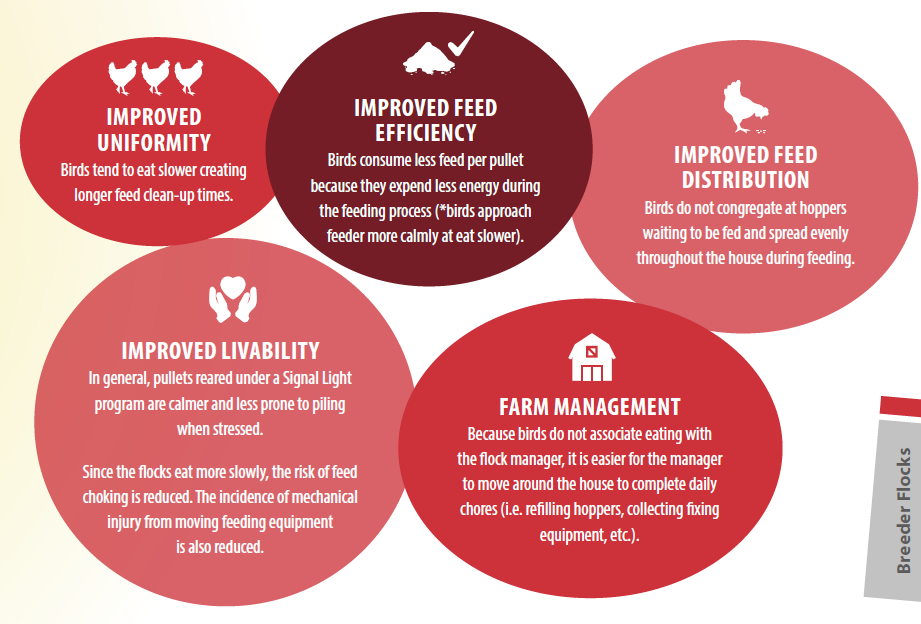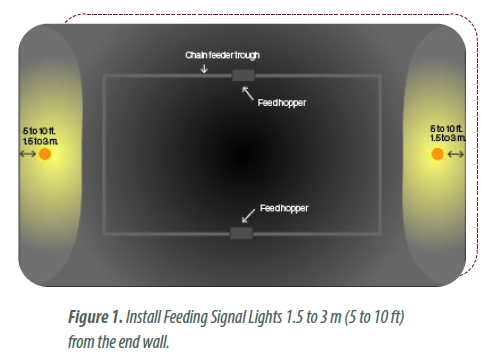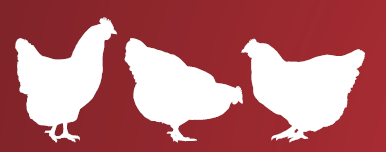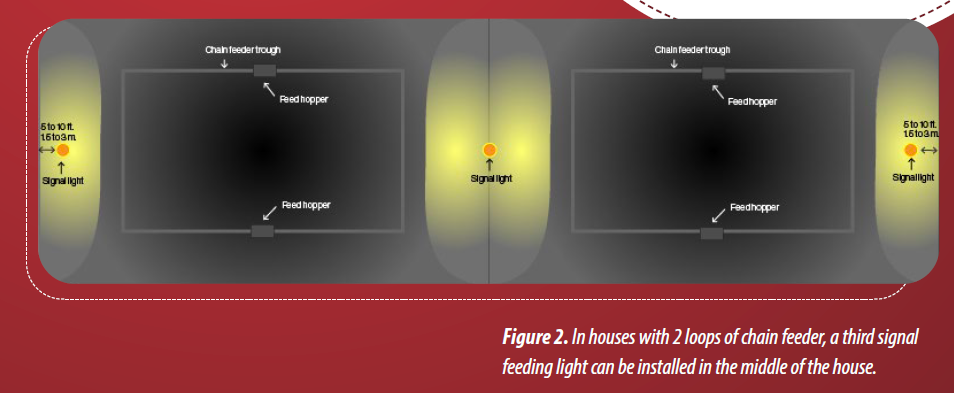
Reproduction and genetics
A Signal Light Feeding Program for Breeder Flocks
To read more content about AviNews International December 2024
Reproduction and genetics
To read more content about AviNews International December 2024
Content available at:
Indonesia (Indonesian) Melayu (Malay) ไทย (Thai) Tiếng Việt (Vietnamese) Philipino
The main objective of the Signal Light Feeding Program is to provide uniform feed distribution during the rearing period. The program aims to train birds to associate the Signal Light with feed distribution.
The Signal Light Feeding Program contrasts to the “traditional method” of feed distribution using chains and troughs¹ where birds associate either the flock manager or the sound of the feed motor as an indication of feeding time.
The “traditional method” method often creates commotion where birds rush the center of the house² increasing the potential for piling and injuries.
The frantic dash to the hoppers is often followed by birds racing around the house before finally finding space to eat. Under these conditions, timid eaters are disadvantaged and often do not satisfy their nutrient requirement to sustain adequate growth.
SIGNAL LIGHT FEEDING BENEFITS OVER TRADITIONAL FEEDING
Install the Signal Light approximately 5 to 10 ft. from the end wall of the house approximately 2 to 4 ft. from the floor (Figure 1). Ideally, the end 1/3 of the house should be illuminated with a low light intensity.
The Signal Light should be wired with the main house lights. Wiring to the main house ensures all lights are off when the main house light timer goes off each afternoon.

Feed and light switches should be in the house entry room for easy access without having to enter the bird area.
Use a bulb type and wattage that will only illuminate the area of the house around the Signal Light for good results. Use a low wattage bulb (5 to 10 W) to prevent many birds moving toward the Signal Light.
It is also necessary to use a low wattage bulb to prevent illuminating the area around the feed hopper/source of feed. The area around the feed source must be totally dark so the birds will congregate and wait for feed to exit the hopper.
If the birds can see the track/feed they will stay there, and Signal Light will be less affective.
PROCEDURE
Training Period (2 to 4 weeks)
The purpose of the “Training Period” is to teach the birds to associate the Signal Light with feeding.
Feeding in the dark, in the absence of a Signal Light, does not guarantee there will be an even distribution of birds around the entire feed trough.

The Signal Light feeding program should commence once the flock is placed on a skip day feeding program (i.e. every-other-day; 5 and 2; 4 and 3).
If restricted everyday feeding is prolonged, begin using Signal Light feeding no later than 3 to 4 weeks of age.
Protocol (It is recommended that the grower is present during the feeding process).
Birds move but seem to congregate at the hoppers:
Birds that congregate at the hoppers can happen in houses that have split feed systems with two sets of hoppers at the ¼ and ¾ positions of the house.
A 3rd Signal Light is recommended at the middle of the house to draw birds away from the hopper areas and prevent congregating around the feed source/hoppers (Figure 2).

With three Signal Lights, there will be a Signal Light at each end wall and one in the middle. Three Signal Lights may require an even lower wattage/lumen bulb to prevent illuminating the area around the hoppers.
Birds do not move away from the feed hoppers:
SUMMARY
A Signal Light Feeding Program is a proven method to help manage feeding and can potentially improve performance during the production period.
Uniformity and livability are consistently improved in flocks reared on this program.
Uniformity and livability are essential to produce flocks capable of high peak production and persistence and low hen mortality.